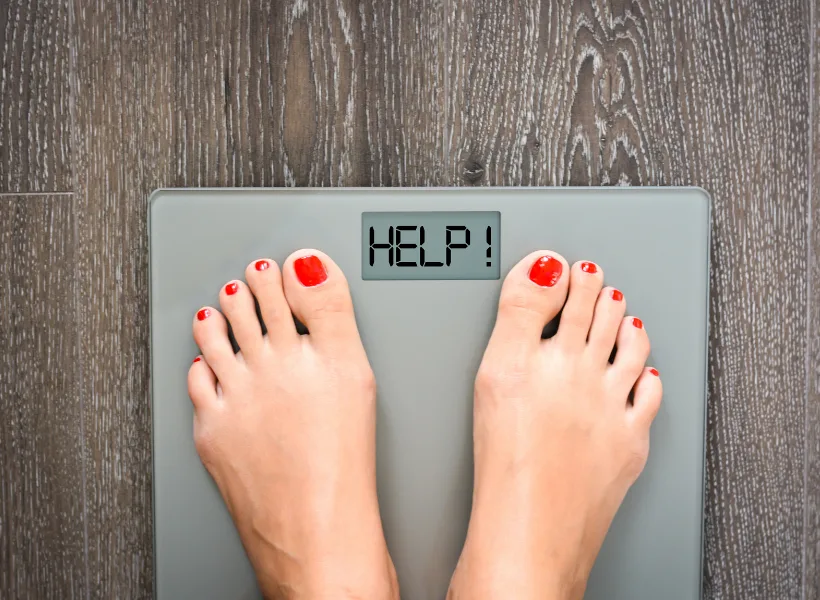Sweet food and beverages are undeniably attractive, thanks to our brains’ inbuilt mechanisms that respond to their palatability with a surge of dopamine, a neurotransmitter that signals pleasure. This neural response, however, can lead to consequences beyond temporary bliss, particularly in the form of blood sugar spikes that come with a plethora of negative effects.
Alarmingly, such phenomena are not as uncommon as one might presume; research shows that a whopping 88% of people experience high blood sugar spikes, according to American Diabetes Association. A single spike in blood sugar post a meal can exacerbate oxidative stress and trigger inflammation. Over time, the incessant cycle of glucose peaks and troughs could pave the way for conditions like insulin resistance, stubborn weight gain, and even chronic illnesses like diabetes and heart disease.
While the ill-effects of sugar spikes are well-known, recognizing its signs might be tricky. Here, we will delve into seven common indicators of dysregulated glucose levels and provide comprehensive solutions to mitigate them.
Recognizing Blood Sugar Spikes: Seven Telltale Signs
- Feeling Hungry Soon After Eating: If hunger pangs strike within 90 minutes to two hours post your meal, it’s likely you experienced a blood sugar spike. The rapid plunge in glucose levels after a steep rise triggers the release of the hunger hormone, ghrelin, signaling the need to eat again.
- Cravings for Sweet Foods: A study confirmed that a sharp fall in glucose levels post a sugar spike intensifies cravings for sweet foods, thereby perpetuating the hunger-craving cycle.
- Experiencing Brain Fog or Lack of Focus: Sugar spikes may negatively affect cognitive functions, impairing clarity of thought. Furthermore, blood sugar fluctuations can disrupt sleep patterns, causing nocturnal disturbances and consequent morning grogginess.
- Dips in Energy Levels: The post-lunch drowsiness many experience is often due to blood sugar crashing after a meal. Controlling sugar spikes could help maintain steady energy levels throughout the day.
- Acne or Skin Breakouts: A study confirmed that the frequency of acne breakouts could be reduced by controlling glucose spikes and maintaining a low-glycemic diet.
- Constant Fatigue: Excessive glucose may hinder the energy production efficiency of our mitochondria, the powerhouse of our cells. This can lead to constant fatigue.
- Stubborn Weight Gain: Insulin, released in response to a sugar spike, stores excess glucose as glycogen and fat. Over time, the creation of new fat cells to store excess glucose may lead to hard-to-lose weight gain.
Combatting Blood Sugar Spikes: Diet, Lifestyle, and Beyond
With the increasing awareness about the ill-effects of sugar spikes, diets like keto, paleo, and low-carb that limit sugar and carbs have gained popularity. Yet, the sustainability of such diets can be challenging. Instead, simple yet effective strategies can help regulate glucose levels and prevent everyday sugar spikes, without sacrificing your favorite foods.
Preparing for Meals: How to Reduce Glucose Levels Before You Eat
- Eat Fiber First: Soluble fiber forms a gel that slows down the entry of glucose into the bloodstream. Ingesting fiber-rich food, like a salad or veggies, before a meal can help regulate glucose release. A study by Cornell University found that reordering food in this manner could potentially cut glucose spikes by up to 73 percent.
- Harness the Power of Plant-Based Enzymes: A recent breakthrough showed that certain plant-based enzymes can convert glucose in the gut into resistant starch, preventing its absorption and assisting in maintaining a balanced glucose curve even while consuming carbs.
Post-Meals: Preventing Glucose Spikes After Eating 
- Incorporate Movement: Engage in a short period of activity, such as walking, dancing, or strength exercises, within an hour of eating. As our muscles consume glucose during activity, this helps in utilizing the glucose, thus preventing a spike.
- Apple Cider Vinegar: A 2004 study published in Diabetes Care investigated the effects of vinegar on post-meal blood glucose levels. Blood glucose levels were measured one to two hours after participants consumed a meal. The participants were categorized as insulin-sensitive (normal response), insulin-resistant (pre-diabetic), or having Type 2 diabetes. They were instructed to drink either apple cider vinegar or water with a sugar substitute before consuming a buttered bagel and orange juice. The insulin-resistant group that consumed vinegar before their meal experienced increased insulin sensitivity for an hour post-meal. The Type 2 diabetes group also observed a slight improvement, with the most significant effects seen in individuals with normal insulin response and those who were insulin-resistant.This study indicates that vinegar may substantially enhance post-meal insulin sensitivity in insulin-resistant individuals, suggesting that apple cider vinegar could function similarly to anti-diabetic medication. Furthermore, the American Diabetes Association states that vinegar may make food healthier and support digestion, possibly due to its influence on the rate of gastric emptying (food leaving the stomach), which in turn affects blood sugar and insulin levels.
Extra Tips: Additional Ways to Tackle Blood Sugar Spikes
- Hydrate: Drinking enough water aids in flushing out excess blood sugar through urine, aiding in maintaining a healthy blood sugar level.
- Control Portion Size: Consuming meals and snacks in the right portion sizes can help avoid overeating and control blood sugar levels.
- Choose Whole Foods: Whole, unprocessed foods are typically higher in fiber, protein, and fat and lower in carbs, which helps in maintaining stable blood sugar levels.
- Manage Stress: Stress hormones such as cortisol can cause blood sugar levels to rise. Techniques like mindfulness, yoga, and deep breathing can help manage stress and maintain balanced blood sugar levels.
- Get Enough Sleep: Lack of sleep or poor quality sleep can affect insulin sensitivity and cause your hormones to be out of balance, leading to increased blood sugar levels.
Taking Control of Your Blood Sugar Levels
Blood sugar spikes, while often overlooked, can wreak havoc on your health on both daily and long-term scales. Recognizing common signs such as frequent hunger, cravings for sugary foods, energy dips, and stubborn weight gain can be the first step towards healthier glucose regulation.
By implementing simple strategies like consuming fiber first, reordering your meal, and including movement after meals, you can flatten your glucose curve. The resultant benefits extend beyond managing your glucose levels; you may experience better sleep, enhanced energy, reduced cravings, and even weight loss. More importantly, you improve your metabolic health and reduce the risk of chronic diseases. So take charge, understand the signs of blood sugar spikes, and embark on your journey towards healthier, balanced living. https://www.youtube.com/embed/PrvSLtRLDg0




